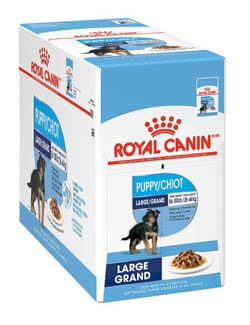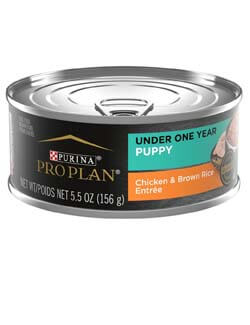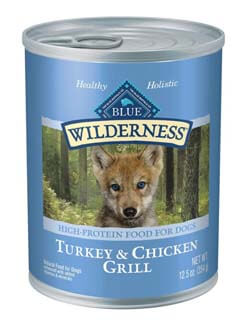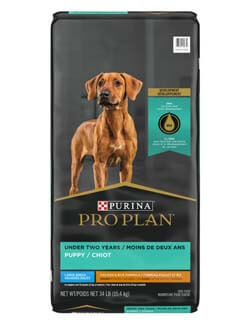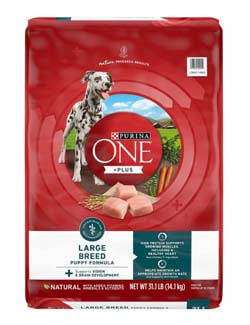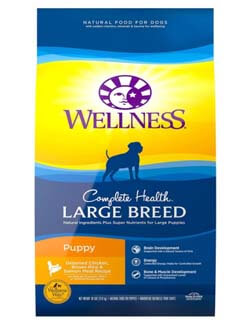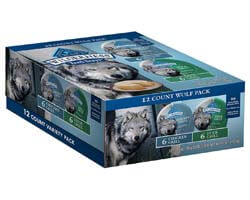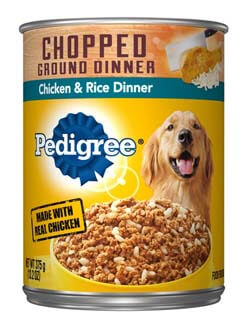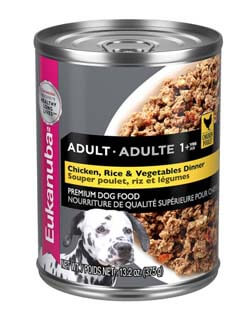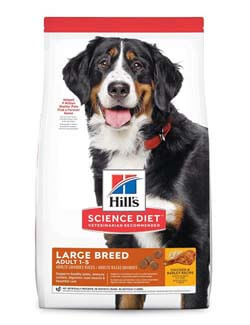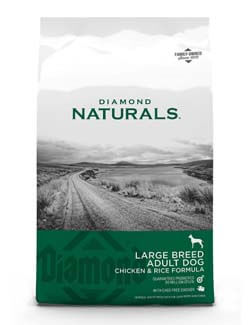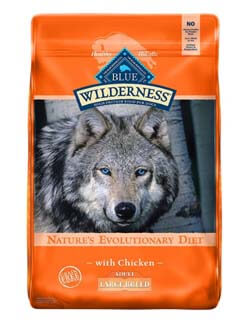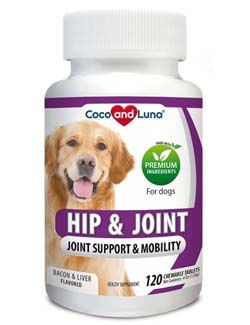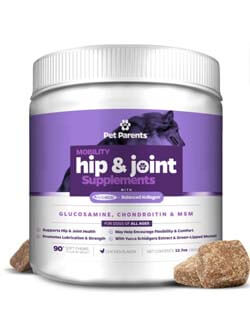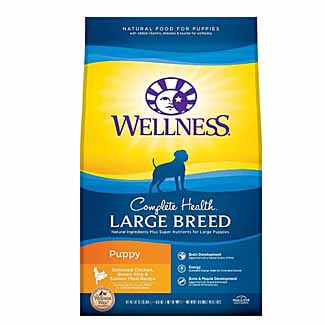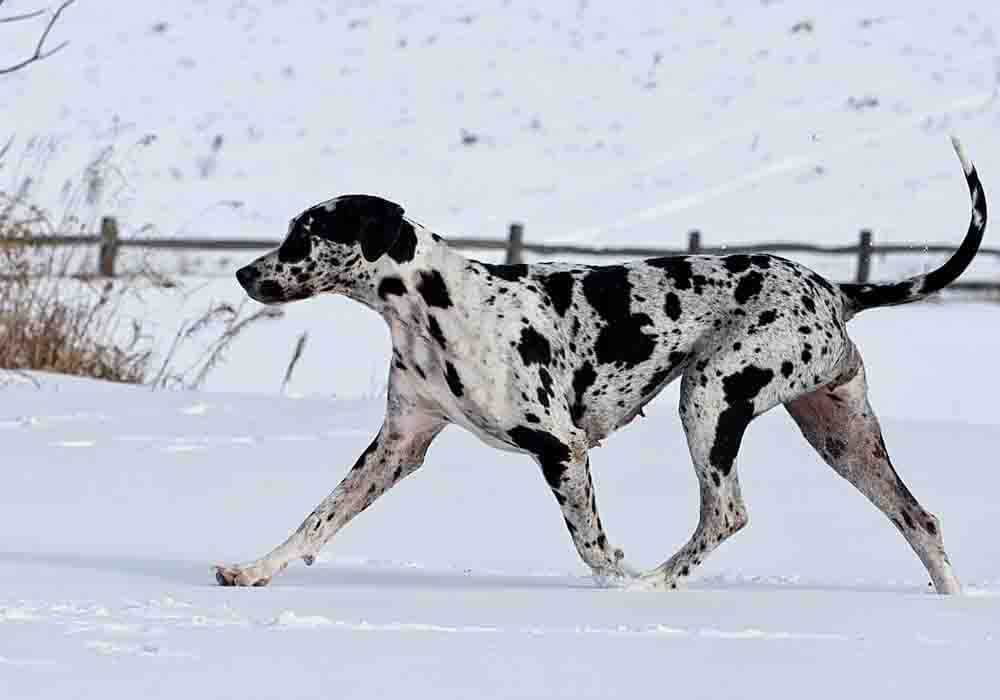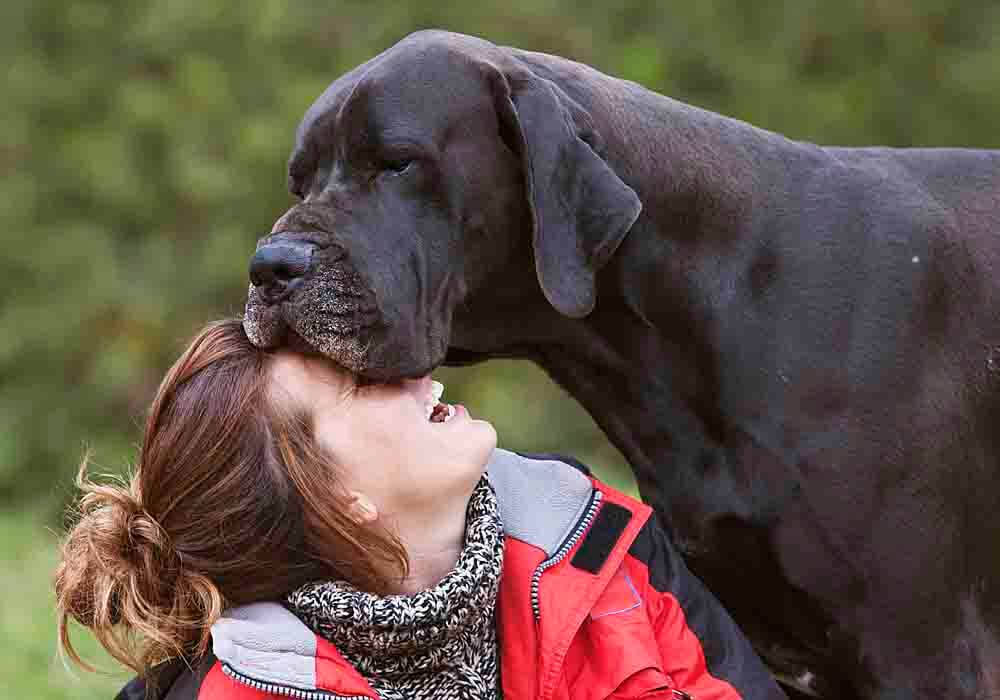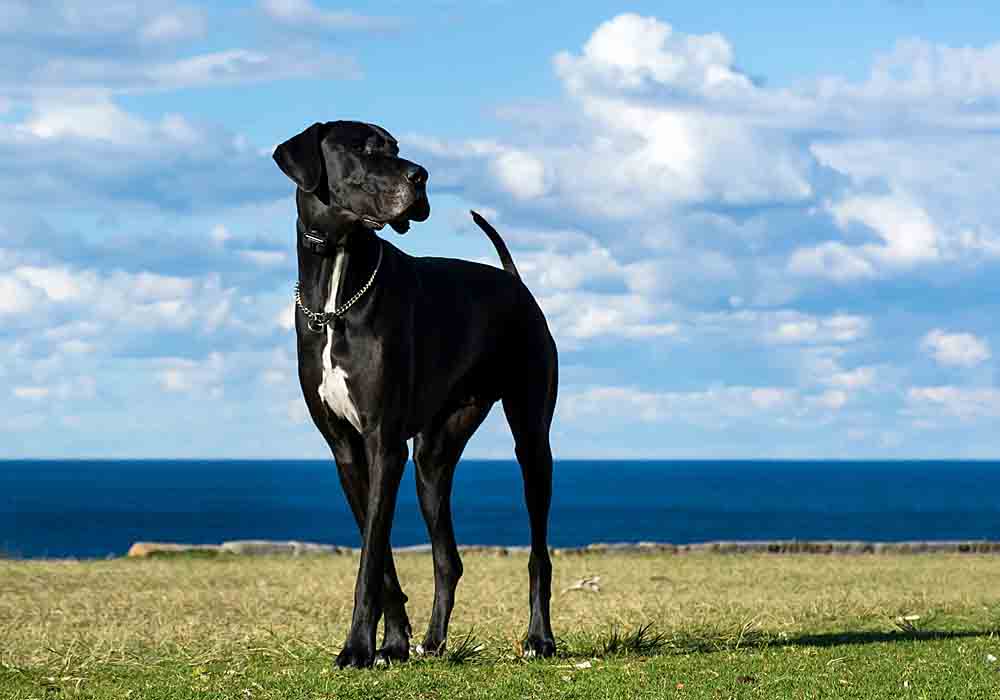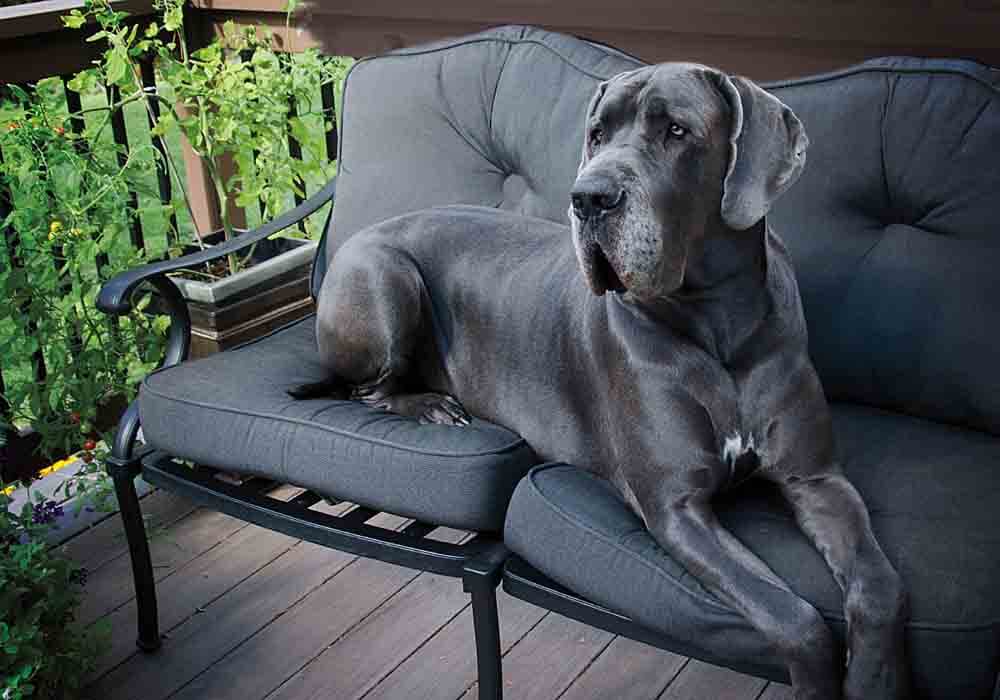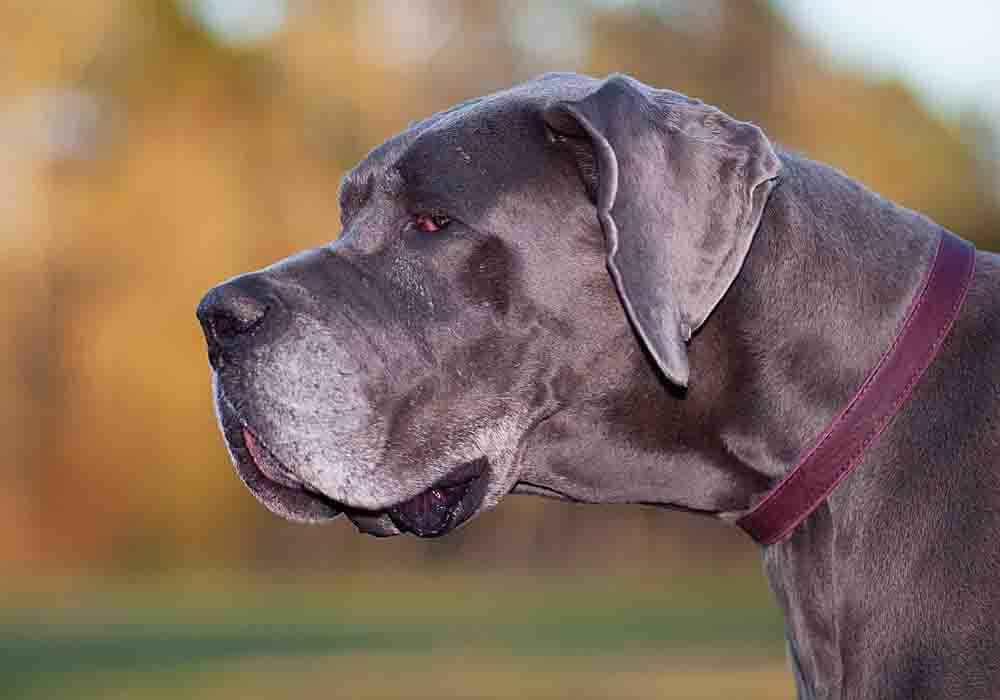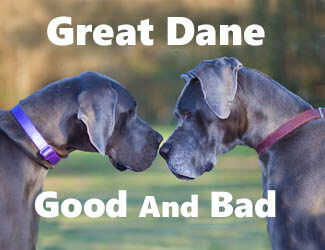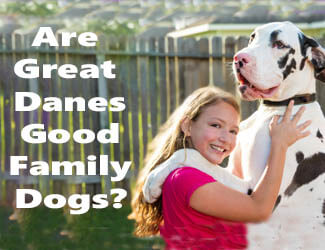Great Dane Dog Care Guide
From Puppy to Adult
by Ken Alden
If you've decided on the regal Great Dane (also lesser known as German mastiffs) as your next dog breed, then you'll need to plan for their major growth. From puppyhood to adulthood, your Dane will need specific nutrition, exercise, and supplemental care.
Great Dane Dog Care Includes...
- Proper puppy feeding to protect bones during their explosive growth
- Knowing the proper vaccinations and at what age they should be given
- Daily exercise but not too much so as to protect hips and joints
- Understanding common health issues and what to do to protect them
- Knowing which supplements that can benefit them
In the following article, we will explore the specific needs of the Great Dane. This includes their diet from youth to adults, their vaccination schedule, the exercise needs, and some common health issues that these dogs can encounter. Read on to learn everything you need to know about turning a Great Dane puppy into a healthy adult dog. Read More Below...
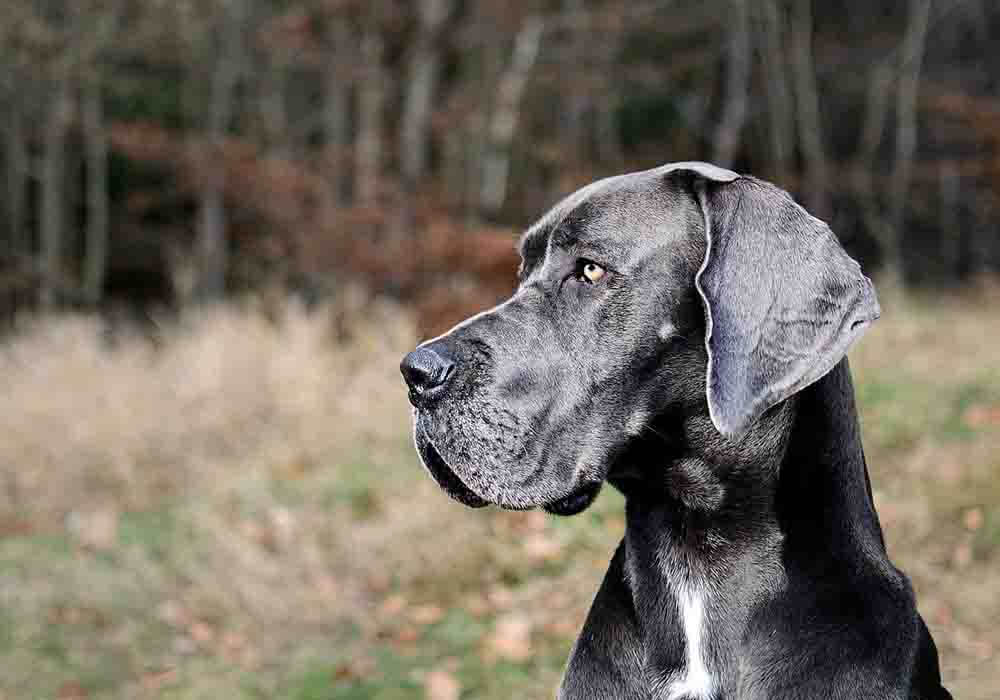
Pro-tip: Ever try lifting a Great Dane? Their weight can hurt not only your back but their joints when they hop down from cars, sofas or even your bed. To protect your back and theirs check out the best Mastiff ramps on Amazon.com now.
Caring for Your Great Dane Puppy
To skip down this page for Great Dane Adult Care click here
As with any puppy, Great Danes are a lot of work. They require near-constant supervision, consistent training, and routine. While there are many guides about how to train puppies, we will focus on Great Danes specifically, and their unique needs for growth.
To begin, let's discuss the diet of your puppy. This often changes as they switch between their mother's milk and soft food, adding in larger quantities, and perhaps moving to dry food altogether. great dane dog care guide
Feeding Your Great Dane Puppy
As a giant breed, you can expect your Great Dane puppy to eat a lot of food. Their diet is extremely important to the proper growth and the development of muscles and bones. As you can imagine, the needs of a one-month-old puppy are much different than that of a 6-month-old.
We'll explore all of these needs, but first, we should understand the nutritional needs of the young dog.
It's important to understand the basic components of dog foods so we can see which type of food is best for this breed.
Dog food has six main components:
- Water
- Protein
- Carbohydrates
- Fats
- Minerals
- Vitamins
The recommended
ratio of these ingredients changes depending on your dogs age.
P
Water
Protein
Carbohydrates
Fats
Minerals
Vitamins
Puppy
No recommendation
>22.5%
No recommendation
>8.5%
~4%
~6945 mg/kg
Adult
No recommendation
>18%
No recommendation
5.5%
~2-3%
~6945 mg/kg
Keep in mind that these percentages are the minimum that your
dog should be getting. A growing Great Dane, in particular, needs higher
percentages of fat and protein in the beginning, but once they are nearing full
size, the fat should be lowered. Aim for a
range between 25%-35% for protein, and 12%-18% for
fat for about the first nine months. great dane dog care guide
Avoid feeding your puppy food with levels of protein and calcium
that are higher than the recommended amounts. This can cause your dog to grow
too fast and can cause bone complications. Large breed puppy food is great at
including just the right amounts of ingredients suitable for a Great Dane.
Pro-tip: Great Dane anxiety, aggression, destructive chewing, jumping up, fearfulness, and other behaviors can be controlled with the right training program.
Here’s a great course that
addresses these issues along with many other dog training basics: Check it out now!
Great Dane Puppy Feeding Guide…Their First Year
As your puppy grows, the types of food and amount of food they need changes. Let's review the specific quantities and kinds of meals that are needed throughout the first year of their life. great dane dog care guide
Less Than 4 Weeks
When your puppy is born, they will feed with their brothers and sisters, using their mother's milk as a source of all of their nutrients. This includes hydration as well. These young pups will nurse every two hours for the first week of their life, slowing down as they grow.
4-8 Weeks
At around four weeks of age, your puppy will begin to eat solid food. The breeder will begin to introduce soft food into your pup's diet. Some breeders use dry kibble that is softened with water, and some use wet food only. It's important to use softened food, as the dogs are still developing their teeth at this time. Their gums are sensitive and can be damaged easily by hard kibble.
8-10 Weeks
During this time, it is likely that your new best friend will come home with you. This is when your pup will be fully switched over to solid food. Your breeder and vet will likely recommend a specific food or diet for you to follow, but generally, it will consist of softened dry food or dry food mixed with wet food.
A Great Dane puppy should be fed between two to four cups of food a day, and the food should be separated into three equal-sized meals.
12 Weeks (3 Months)
A three-month-old Great Dane will be very energetic and probably happy to chow down on their food. You should be giving your pet somewhere between three to five cups of food a day, split into three meals. At some point during this month, you can switch your dog over to two meals a day instead of three, just be sure that your pup isn't eating too quickly. great dane dog care guide
16 Weeks (4 Months)
A Great Dane at this age should be eating between four to six cups of food per day. You will be breaking their food up into two equal meals at this point and following this for most of their life. If your pet was eating five cups at the end of three months, don't lower the amount back to four cups at the beginning of the fourth month.
20 Weeks (5 Months)
At this point, your dog will be eating five to seven cups of food per day. It's a good idea to teach your dog to take breaks during their meal, so they don't eat too quickly. Interrupt their eating by taking the food away, asking the pup to sit, and then rewarding them with a treat. The rest of their food will teach them not to be food aggressive, and it will slow down their eating.
6-8 Months
For these three months, your Great Dane will increase from six
cups to nine cups of food a day. At this time, your pup will likely have all of
their adult teeth in, and you can begin
to feed them solid food only—if you wish.
9-12 Months
For the remainder of the first year of your Dane's life, you will be feeding them somewhere between seven to ten cups of food per day. When your pup has an extremely active day, you should feed them on the higher end of this range. If your pup has been inactive for a few days or seems to be putting on weight, then you should lower the food a little bit.
Over One Year
Great Danes continue to grow far past the age of other dogs. They usually reach their full height by 18 months old, but continue to fill out and mature until they are three or even four years old. You should expect to feed your male Dane 8-10 cups of food a day for the next few years, while a female will eat 6-9 cups a day on average.
How Long Should I Feed My Great Dane Puppy Food?
Since Great Danes take so long to mature, the time that you feed them puppy food is longer than the average dog. Great Danes should eat giant breed specific puppy food until they are at least 15 months old. Confirm with your breeder and vet about the exact time to switch from puppy to adult food.
Some vets may even recommend keeping your dog on puppy food until they are two years old because the breed takes so long to fully mature.
Best Great Dane Puppy Food
Royal Canin Large Breed Puppy Food (from Amazon.com). One of our favorite picks for wet puppy food for Great Danes is the Royal Canin Chunks in Gravy. This food is specifically engineered for large breeds, so it "supports the moderate energy needs of large breed puppies during their long growth period."
Purina Pro Plan Pate Wet Puppy Food (from Amazon.com). This puppy food isn't a large breed-specific. It would be best used as an enhancement for dry food for your dog's meal. We like the high protein content of this food and the added fish oil, which aids in brain function and development.
Blue Buffalo Wilderness High Protein Puppy Food (from Amazon.com). This puppy food offers a grain-free option for your dog. The high-protein contents mean your dog will have the energy necessary to grow. This wet food may be a bit rich on its own, so mixing with dry food is a great option.
Best Kibble For Great Dane Puppy
Purina Pro Plan Large Breed Puppy Food (from Amazon.com). This DHA enhanced dry food acts as a glucosamine source for the developing bones and joints of large breeds. Live probiotics and protein as the first ingredient that gives this kibble an edge over other foods.
Purina ONE SmartBlend Natural Dog Food (from Amazon.com). Another great product from the Purina line for puppies is the SmartBlend large breed dry food. This food is created with extra care taken for the added vitamins and minerals, in ratios that are more beneficial for large breeds. 1.1% calcium and added glucosamine will help your pup grow strong, sturdy bones. great dane dog care guide
Wellness Complete Health Natural Dog Food (from Amazon.com). With 30% protein and 13% fat, this dry kibble offers an excellent ratio of two of the main ingredients for puppies' growth. Giant breeds need to avoid excessive amounts of fat, or their growth rate can move too quickly. 13% is a sweet spot for fat in large breed puppy food.
Vaccination Shot Schedule for Great Dane Puppies
There
are five main shots that puppies need to get
as they grow. You probably know that you shouldn't take your pup to trails or
dog parks as soon as they come home, and that's because their immune system is
still developing. These shots give them the required protection from dangerous
illnesses in the world.
Age
6-8 Weeks
10-12 Weeks
12-24 Weeks
14-16 Weeks
12-16 Months
1-3 Years
Shot
Distemper
and parainfluenza
DHPP
Rabies
DHPP
Rabies, DHPP
DHPP, and Rabies,
as required by
local laws
Details
Initial shots are usually done before the puppies leave the breeder’s
Combined shot protecting from distemper, hepatitis (adenovirus), parvovirus, and parainfluenza
Rabies
This is a booster for
the DHPP vaccine
Another booster for these two shots
Local legislature varies, be sure to check with your municipality
How Much Exercise Do Great Dane Puppies Need?
Great Danes are commonly thought of as good apartment dogs because they don't actually need too much exercise. While it's true that they don't need to run around as much as a border collie (who needs at least two hours of exercise a day), Great Dane's still need to stretch their legs.
Young puppies up to five months of age shouldn't have too much vigorous exercise in a day. 20-30 minute walks around the neighborhood twice a day are plenty, with lots of gentle play and mental stimulation at home throughout the day.
At six months of age, your puppy will be able to walk a little longer and can visit dog parks for short times. It's important to avoid rough play or jumping and agility exercises for the first year and a half of your Great Dane's life. Because the breed grows quickly but matures slowly, their joints are at high risk of damage from repeated jumping. Don't take your dog on any steep hikes or for jogs at this time, either.
It's important to balance listening to your puppy and regulating
their exercise. Young dogs may want to play and play, so you may have to step
in and stop at the 30-minute mark, so your dog doesn't overexert themselves. On
the other hand, your pup may seem to want to stay in bed all day, and it's
important to let them do so. Some days growing takes all the energy that they
have! Great Dane dog care guide
How to Socialize a Great Dane Puppy
As the American Kennel Club standard temperament for Great Danes is a "spirited, courageous, always friendly, dependable and never timid or aggressive" companion, you can expect socializing your Great Dane to be a joyful experience.
The key to socializing puppies is to start early. Dogs that meet 100 people within their first month of coming home tend to grow into confident dogs. The best way to socialize a Dane pup is to invite over many friends and colleagues and get each of them to greet your pup and give them a treat. Socializing isn't simply about meeting new people; it's about liking and making connections with them as well.
Of course, socializing a dog includes meeting other four-legged
friends. This can be tricky when your pet doesn't have their vaccinations yet.
The best way to meet new pups safely is by signing up for a puppy class. The
dogs in these courses are required to have certain shots, and it's a great way
to meet other canines at the same age and play level. great dane dog care guide
Great Dane Puppy Essentials Your Pal Will Need
Be prepared for the day your new doggie comes home by picking up the following items:
- Dog bed
- Water and food dishes
- Soft and dry food
- Treats
- Soft toys
- Teething toys
- Dog blanket
- Dog sweater
- Puppy pee pads
- Poo bags
- Leash
- Collar
- Dog tags with your phone number engraved
- Crate or kennel if you decide to crate train your puppy
- Baby gate for open stairways
- Radio for when they are alone
Pro-tip: Great Dane's (and their owners) love dog crates…and for good reasons. Crates keep dogs from mischief while you're away, are perfect for house training, for traveling by car, and provide the dog a place to de-stress. Check out the best Mastiff crates on Amazon.com now.
Best Way To Care For A Great Dane Adult
Once your puppy is 18 months old, they will nearly be fully mature. With a full-grown dog of this breed, the needs are different than those of a young dog. Let's discuss the proper ways to care for an adult Great Dane.
Great Dane Nutritional Requirements
If we refer back to the chart of nutritional requirements from above, we can see how some key components are different for adult Danes.
P
Water
Protein
Carbohydrates
Fats
Minerals
Vitamins
Puppy
No recommendation
>22.5%
No recommendation
>8.5%
~4%
~6945 mg/kg
Adult
No recommendation
>18%
No recommendation
5.5%
~2-3%
~6945 mg/kg
Adult dogs of this breed need less protein, fewer fats, and lower quantities of minerals, especially calcium. Most large breed dog food will take these needs into account, but it's still important to be a conscious consumer and check the ingredients list.
How Much Should I Feed My Great Dane?
The amount of food that an adult Great Dane needs will vary depending on your dog's size and the amount of exercise they get a day. The following is a general guideline for feeding your pet with different options for wet, dry, or mixed food. Always be sure to check with your vet when deciding on a new diet for your dog.
P
Female Adult
Male Adult
Wet Food
4 cans
6-8 cans
Dry Food
6-8 cups
8-10 cups
Mixed
4 cups of kibble
1 can of wet food
5 cups of kibble
2 cans of wet food
The Best Food for a Great Dane
Best Wet...
Blue Buffalo Wilderness Trail High Protein Wet Food (from Amazon.com). This canned food is a great option for a meal-topper for your large breed dog. A relatively low-fat, wet food, with only 7% fat will add protein and flavor to the meal without adding any grains. While carbohydrates are healthy for animals, they will likely get more than enough from their dry food already.
Pedigree Chopped Ground Dinner (from Amazon.com). With a fat content of only 6%, this canned food is a great choice for Great Danes. This food also contains vitamin E and biotin, which will help keep your puppy's coat shiny and nails strong. Mix this in with a protein-rich kibble to ensure your pet gets the nutrients they need.
Eukanuba Wet Food (from Amazon.com). With only 4% fat content, this is a wet food that you could add more liberally to your Dane's diet. This canned food does contain rice, so it will create a balanced meal when paired with grain-free kibble.
Best Kibble...
Hill's Science Diet Large Breed Dog Food (from Amazon). This large breed-specific food contains the vitamins and minerals necessary to aid in digestion, joint care, and a healthy immune system. The high-protein content promotes the growth of lean muscles while keeping fat levels down.
Diamond Natural Premium Large Breed Dog Food (from Amazon). This dog food is packed with high-end ingredients like glucosamine, omega fatty acids, and healthy microorganisms. With 23% protein and 13% fat, this kibble is best suited for large dogs in their earlier adult years. The fat level won't be a problem for young, active Great Danes, but may be too rich as they get a little older. great dane dog care guide
Blue Buffalo Wilderness High Protein Dry Dog Food (from Amazon) If you find that your dog has much more energy and a better demeanor when they have a high-protein diet, then this kibble from Blue Buffalo is the perfect food for your pet. With a guaranteed 32% of the food being made up by protein, this food is great for very active Danes.
How Much Exercise Does a Great Dane Need Everyday?
An adult Great Dane only needs about 30-60 minutes of exercise a day. Keep in mind that on-leash exercise is much different than off-leash exercise. While a brisk walk may get your dog's heart pumping a little bit, they need a proper run to really get the benefits of being outside.
Plan to give your Great Dane short walks in the morning and evening, and about 45 minutes at a dog park or on a hike at some point in the day.
Great Dane dog care guid

For more insight about how much exercise Great Danes need as well as exercising ideas, you'll appreciate our article on this topic.
Great Dane Grooming Needs
The breed falls into the short-hair category, but that by no means discounts shedding. The breed is known to shed a lot, and the little hairs can stick in your furniture and cause you to feel itchy. Counteract this by grooming your Dane regularly. A shampoo a few times a year is usually enough for a Great Dane, but regular brushing is imperative to combat the shedding.
If you can brush your dog once a week, you'll find the amount of hair in your home is lowered greatly. Their fur responds best to firm bristled brushes, and you should groom your pup early to get them used to the feeling.
Great Danes with their floppy ears will be more prone to ear infections, and you should keep a special eye on their inner ears. Dark or smelly discharge is one of the first signs of an ear infection. Cotton balls and a simple saline solution are often all that's needed to clean your dog's ears. great dane dog care guide
All dogs should have their teeth cleaned regularly as well. Brush your puppy's teeth early, and with a dog-specific toothpaste, and you'll be glad when you don't have to fight a fully grown Great Dane to brush their teeth.
Great Dane Common Health Issues and the Best Way to Address Them
The number one cause of death for Great Danes is Gastric Torsion. This is caused by the stomach flipping and cutting off circulation to vital organs. Gastric Torsion, also known as "bloat," is most easily prevented by ensuring your dog eats slowly. It's the reason why we break the young dog's food up into separate meals. If you like to ensure your dog eats slowly, you can invest in a slow feeder like this Freefa Slow Feeding Dog Bowl.
Hip dysplasia is another major health issue for Great Danes. All giant breeds are at risk of this hereditary condition. You can help prevent hip dysplasia by ensuring your puppy gets the proper diet without too much protein and doesn't partake in intense exercise until they are fully grown. Great Dane dog care guide

Large dogs like Danes can suffer from many health issues. We've written a more indepth article that covers them all. Be sure to check out our article here.
Supplements for Great Danes
Because hip dysplasia is such a risk for this breed, bone supplements can help combat the effects. great dane dog care guideGreat Dane dog care guide
Coco and Luna Glucosamine Supplement (from Amazon.com) These chewable tablets are strategically created to aid in the maintenance of healthy bones and joints in dogs. It is said to "promote cartilage health, reduce arthritis pain through its anti-inflammatory effect, help to restore joint health, increase mobility, and improve joint lubrication." A fully grown Great Dane can have four of these treats a day to help with joint health.
Pet Parents Dog Joint Supplement (from Amazon.com) Not only is this a joint supplement, but these chews also offer pain relief from arthritis and inflammation. These luxury supplements include glucosamine, green-lipped mussels, Kollagen, Chondroitin Sulfate, which aids in the nourishment of joint tissue. Your Great Dane will have no problem taking these tasty chews.
Great Dane Dog Care Guide...Final Thoughts
Great Danes are a noble breed, often called the "Apollo of Dogs." These large beasts will be your best friend for the length of their lifetime, but to make sure that best friend is healthy and well-behaved, you need to invest the time and energy into them. Training and nutrition are top priorities for this breed, as the training will allow you to control the 150-pound dog, and the nutrition will ensure they are healthy for a long time.
Return to the top of this Great Dane Dog Care Guide page

About the Author...
Ken Alden, a dedicated Mastiff owner for over eight years, is acclaimed for his expertise in care, grooming, and training. Read more About Me and my dog Shadow.
- Mastiff Guide Home ›
- Great Danes ›
- Great Dane Dog Care
